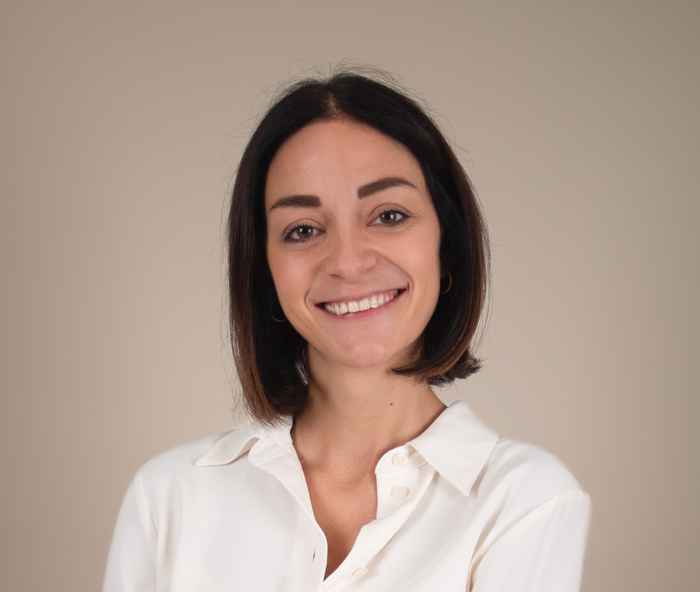Analysis of excess mortality during the pandemic: preliminary findings
3 April 2024

They will present their findings at the Research Centre for Longevity Risk (RCLR) conference, to be held at @Droog in Amsterdam on 18 April. We talked to them about their research, its unique approach and the main preliminary findings.
Van Berkum and Simonetti are collaborating on a project titled ‘The Effect of Socio-Economic Characteristics, Vaccination Information and Geographical Location on Excess Mortality from Specific Causes during the COVID-19 Pandemic in the Netherlands’. Van Berkum has a background in actuarial science and mathematical finance and has been affiliated with the ASE for many years. 'When Pieter Omtzigt filed the motion to commission an academic study, we immediately expressed interest. Our research targets all adults in the Netherlands. We analysed various causes of death for a number of different population subgroups to identify in which causes there was excess mortality and in which subgroups that occurred. To do this, we examined data from before the pandemic (2016-2019) and during the pandemic (2020-2021). Our goal is to understand the effects of COVID-19 on different communities which may help with understanding the reasons behind higher mortality rates.'
Simonetti’s expertise lies in economics and the labour market. She has been involved in the research project since 2022 and explains: 'I focus on analysing the vaccination rate achieved in the Netherlands in 2021 (and part of 2022) and its connection with mortality. More specifically, I’m working on a project that studies people’s willingness to get vaccinated. In particular, I looked at the variation across different demographic and socio-economic groups.'
Unique approach
The research stands out for its use of CBS microdata and supercomputing. This makes it possible to carry out a detailed analysis of mortality statistics during the pandemic. Van Berkum points out: 'The CBS has data available at the individual level over multiple years. We analysed up to 50 million annual observations for the pre-pandemic period and as many as 1.2 billion weekly observations for the period of the pandemic itself, together with 40 risk factors. This led to huge datasets which we couldn’t process on a standard laptop. For these analyses, we used the ODISSEI Secure Supercomputer (OSSC), a specialised supercomputer cluster made available by Dutch universities and configured specifically for sensitive CBS data.'
Preliminary findings
The 2 researchers can already share some preliminary findings. Van Berkum expands: Some causes of death, such as respiratory tract infections, we observed lower mortality than expected. This is probably because people kept their distance. There was no flu epidemic and, of course, we had corona as a new cause of death. In general, the data also clearly show that the level of medical expenses is a key indicator of mortality risk. Something else we noticed is an increase in the number of accidental falls during the pandemic. Why this should be the case is not immediately clear to us.'

Simonetti continues: 'The first results from my research suggest that age, personal income and migration background are important indicators of vaccination status. Native Dutch people appear to be more willing to get vaccinated than people with some form of migrant background.'
Social impact
Van Berkum and Simonetti believe that the main social impact of the RCLR (Research Centre for Longevity Risk) project is that it generates greater knowledge and insight. Van Berkum comments: 'It’s very special that we actually have information at the individual level, supplemented by RIVM data on tests and vaccinations. We can now link numerous aspects, which gives us a more comprehensive understanding.' Simonetti elaborates: 'The data on vaccination status and willingness give policymakers important information about differences within the population. It enables them to develop more targeted communication strategies.'
Expertise of RCLR
The goal of RCLR is to gain insight into longevity risk. If people live longer, it stands to reason that there will be financial consequences. One of these is that more money will be needed to pay out pensions. To keep this risk within specified boundaries, RCLR investigates how the pension system can be designed in an optimal way and how reinsurance products can help pension funds and insurers mitigate longevity risk. Another focal point of RCLR is quantifying socio-economic differences in mortality rates within subgroups as well as between a given subgroup and the general Dutch population.
Visit the RCLR conference
Dr Frank van Berkum and Dr Irene Simonetti will both be presenting their findings at the RCLR conference, to be held at @Droog in Amsterdam on 18 April.